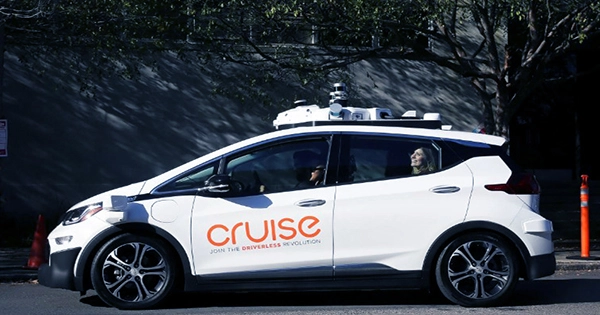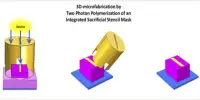There is no such thing as flawless technology. Even self-driving cars that have been programmed to follow traffic regulations are sure to encounter challenges that force them to break the law. Last weekend, local law enforcement pulled over a Cruise-operated hatchback in San Francisco for neglecting to turn on its headlights. While the automobile came to a halt, as seen by footage of the event, regulation regarding interactions between autonomous cars and law enforcement must be created. The video, which was first shared on Instagram, shows the car — one of Cruise’s Chevy Cruises — pulling over to the side of the road ahead of a junction after being told to do so by an officer.
The cop approaches the car and tries unsuccessfully to unlock the driver’s door, at which moment the Cruise vehicle starts driving down the road — only to stop over and activate its hazards again. Police approached the vehicle again, presumably in an attempt to figure out how to switch on the headlights. The pulled-over car worked as expected, according to Cruise, which just over two months ago began allowing San Francisco residents hail trips in its driverless vehicles. The car’s headlights were indeed broken — and, according to the firm, have already been repaired — but it yielded to authorities and subsequently pulled over to the “nearest safe spot.” After the traffic stop, one of the policemen contacted Cruise, but no citation was issued.
However, the incident highlights concerns about how self-driving cars should interact with law enforcement. The vehicle in the video wasn’t totally self-driving, as it turned out. In 2019, Cruise began testing computer vision and sound detection AI to aid in the response of its vehicles to emergency vehicles. When it became evident that the automobile was the target of a traffic stop and the officer was clear of the car, Cruise employees advised the car to pull over at the second location – across the intersection, according to a representative for the company.
When asked if Cruise vehicles would behave differently if they were stopped on a freeway vs a city street, the representative said merely that the firm has a team of employees that provide information to Cruise vehicles when they encounter difficulties. A traffic stop is the most common way for citizens in the United States to interact with police. However, not all drivers are treated the same. Black drivers are nearly twice as likely as white drivers to be pulled over, with far too many fatal results. Several experts suggest that autonomous automobiles would de-escalate police contacts by, for example, lowering the number of investigations into hit-and-run charges.
Others, like as Elizabeth E. Joh, a law professor at UC Davis, believe that if police can confiscate automobiles remotely, autonomous vehicles would give them more authority. “A self-driving automobile would be programmable.” In an article on the issue, Joh says, “Perhaps speed enforcement will become obsolete, either because automobiles will be programmed to keep below the legal speed limit, or because such transgressions would be automatically enforced with a ticket delivered to drivers’ electronic dashboards.”
“However, cops will still take autos in this vision of the future.” It’s possible that someone within the self-driving car has an outstanding arrest warrant. The police may suspect the automobile of containing illegal substances or proof of a crime. Autonomous automobiles may potentially promote new sorts of crime to occur within them since they no longer require human control.”
While no firm developing autonomous cars has stated that they will offer law enforcement with this kind of access, police may make the case for it, stressing the uncertainty that situations like the Cruise traffic stop can cause. Cruise’s automobile isn’t the first self-driving car to be pulled over; that honor belongs to a Google prototype from 2015. The problem is more likely to come to the fore as autonomous car makers progressively deploy their fleets on public roads.
“When there is minimal human participation in driving, the police and the public will interact differently,” Joh writes in the article. “Because so much of the Fourth Amendment is based on human drivers and police officers, a future of automated automobile stops will raise fresh and tough legal and policy issues that we should start addressing now.”
















